#Large PCB
Explore tagged Tumblr posts
Text
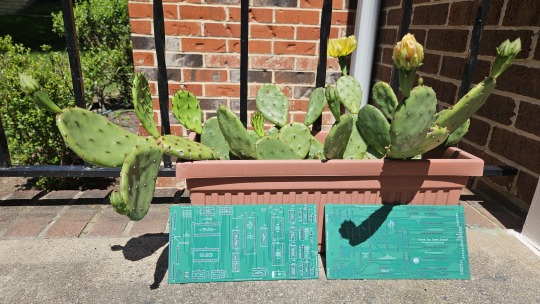

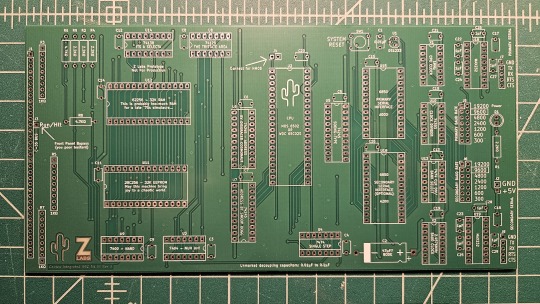
Cactuses in bloom.
#cactus#6502 homebrew#pcb#flower#i went outside to bring in the package with the pcbs#and saw that there was another large bloom#there are 6 flower buds on there
50 notes
·
View notes
Text
May 18, 2025: The House is expected to vote on S.J. Res. 31 the week of May 19th, as early as this Wednesday the 21st.
From 5Calls: On May 1, 2025, 52 Senators voted to repeal Clean Air Act protections against seven of the world’s most toxic air pollutants, including dioxins, PCBs, lead, mercury, and others. Now the resolution heads to the House of Representatives for a vote. Tell your Representative to vote “NO” on S.J. Res. 31 and prevent this vile and unprecedented rollback of Clean Air Act protections.
If S.J. Res. 31 passes the House, it would allow 1,800 of the nation’s largest industrial polluters, including chemical manufacturers, pesticide makers, refineries, and other large facilities, to permanently shut off their pollution controls for chemicals that cause cancers, birth defects, and children’s developmental disorders.
It would allow these companies to open the spigot for the most insidious chemicals, and to stop monitoring or reporting their emissions. These chemicals and their degradation products persist in the environment and accumulate in our bodies throughout our lifetimes. While other chemicals are regulated by the tens of tons, it only takes fractions of a gram of these ultra-toxic pollutants to trigger cancers, reproductive pathologies, and other harms.
No Congress has ever stripped away protections against toxic air pollution—let alone on this massive scale. These toxic exposures are preventable by simply keeping the pollution controls on. What politicians are doing is shameful, cruel, and reckless.
SEE 5CALLS LINK FOR PHONE SCRIPT AND HOUSE REPRESENTATIVE CONTACT INFO
#clean air act#environment#environmentalism#pollution#environmental justice#action items#call your reps
63 notes
·
View notes
Text
BIG BIG rainbows on "Sparkle motion" WLED driver board 🌈💡
We got our WLED-friend PCBs
https://blog.adafruit.com/2024/12/02/leftovers-layout-wled-board-revision-a-completed/
and are testing it with various LED grids. First, we tried out a 16x16 NeoPixel grid that runs on 5V. Since that worked well, we're now onto a much bigger 60 x 60 grid - that's 3,600 LEDs! These are some NeoPixel pebble
netting samples we're also testing at the same time; each one has 20 x 60 pixels and uses 12V power, so it's a good test of the DC pass-through for higher voltages. Since WLED has a limit of 2000 pixels per output, this demo uses the three output ports that are then 'merged' together in memory to make a single large grid. We have more to test soon: the onboard IR receiver, USB PD, I2S microphone, extra I/O pins, and I2C, so watch for those videos as they come together. Coming soon -
#wled#neopixels#ledart#rgbleds#adafruit#electronics#makers#diyprojects#ledgrid#smartlighting#rainboweffects#ledcontroller#sparklemotion#leddisplay#electronicsprojects#makercommunity#ledsetup#custompcb#lightdesign#ledlife#ledtechnology#ledlighting#hobbyelectronics#technerd#creativeelectronics#ledmatrix#neopixelgrid#ledprojects#smartleds#techinnovation
66 notes
·
View notes
Text
The functionally extinct orca ecotype (that no one speaks about)
Type 2 Eastern North Atlantic orca (exactly how they should be classified is up for debate, but for the sake of simplicity this is what I'll go with) inhabit the shores of Britain. With just 2 males remaining, each in their sixties - W001 'John Coe' and W008 'Aquarius' - the ecotype faces certain extinction. But what happened?
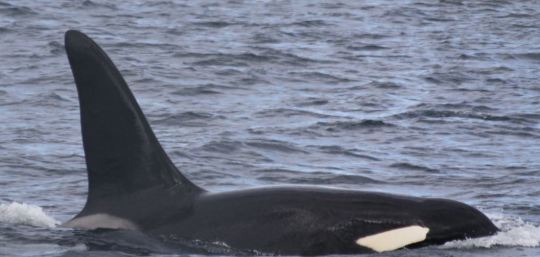

(Aquarius left/John Coe right - photos from HWDT)
Though this pod could have numbered >15 at one point, only 10 individuals have ever been officially recorded - never with a calf. The main reasons for this being inbreeding and pollution.
Having never been recorded interacting with the other orca pods that are occasional visitors to their home range, they certainly are a highly inbred group of orca. With only one small pod of this ecotype known, they've always been in a fragile state, perhaps destined to fail from the start. It's believed that these are orca from a different region that tried - and, unfortunately, failed - to cut out a niche for themselves in waters where orca were a rare sight. Their population simply wasn't sustainable long term - however, this is no doubt due to pollution, as well as inbreeding.
The most polluted marine mammal discovered thus far was the last female of the pod, Lulu. Lulu passed away after becoming entangled in a creel rope. Her body contained almost 1000 mg/kg of PCB's (a toxic compound used in the making of electronics). A safe amount is considered anything below 20. Evidence suggests that Lulu never had any calves, despite being well over the age of maturity. The combination of PCB's and inbreeding likely rendered her, perhaps even the entire pod, infertile.
It's a tragic end for a beautiful group of orca - with large, downward sloping eye patches, colossal dorsal fins, and an impressive size, these are absolutely beautiful orca. Very little is known about them, unfortunately - in fact, we have only 3 clips of their vocalisations (which are adorable, by the way) vvv
youtube
What we do know is that;
° they travel alot, and fast
° they prey on mammals
°they are quiet and reserved (ignoring boats, somewhat inactive, rarely vocalising)
We're witnessing the devastating end to an incredible group of orca - we can only hope this doesn't happen to others. :')

Here are some photographs from HWDT of the beautiful 'West Coast Community' orca.






48 notes
·
View notes
Note
According to “Mass Animal Deaths Heat up Fight To Permanently Halt SeaWorld Operations” by Inside the Magic, bird conservation organizations are literally begging SeaWorld to stop their fireworks shows because of how many native birds they’re killing. But go ahead keep acting like their rescue operations justify all the harm/trauma they caused to the wild cetaceans they captured and the wildlife they continue to put in harm’s way in the name of human entertainment. Using ur large platform to assuage ppl’s guilt about spending their money at seaworld *directly* perpetuates this harm. I don’t know how you call yourself a proponent of animal welfare and then support this mega corporation that puts profits above all else
Hi there it seems like you think that I support corporate SeaWorld and all the decisions it makes. I am against a lot of things that SeaWorld does.
This includes: setting off fireworks, building roller coasters instead of updating animal habitats and the cruel layoffs that they inflicted on their employees during COVID.
I agree with the letter put forward, San Diego Audubon did a great job documenting the very real impacts of fireworks on seabirds. Firework events like the 4th of July and New Years Eve are extremely stressful for all animals - as detailed in the letter there were also illegal fireworks along with the firework shows in the City of San Diego and SeaWorld.

SeaWorld stopping their fireworks shows in favour of something potentially less impactful like a drone show would be a great start, but fireworks shows - legal or illegal, would continue regardless. Whether that would reduce the impact or not remains to be seen, but I think SeaWorld should stop their firework shows.
The problem is, it is a corporate company that wants to give people want they want so they buy tickets. Guests like fireworks. People expect fireworks on the 4th of July, NYE ect. I personally think we need to evolve as a society and move away from fireworks in general but that’s not a popular opinion.
Now, to your point about impact on wild whale populations, there is certainly not enough data to conclude that populations were unable to recover from the captures.

You can see with this graph that the Southern Residents were able to recover their numbers after the capture periods, but unfortunately populations continued to decline due to other factors. This includes anthropogenic causes like boat traffic and decreasing food supply with increasing dam building and more efficient fishing methods to take more Chinook Salmon from the orcas. And ongoing effects of bioaccumulation of toxins like PCBs and DDTs.
Some scientists argue that the population decrease from capture resulted in less competition and increased survival rate. Others say that the impacts are still being felt today. There’s not exactly a consensus on it because it’s hard to measure the effects.
While I disagree with corporate SeaWorld and a lot of decisions they make, I will continue to support the work of SeaWorld’s team of marine mammal specialists and veterinarians. And support accredited facilities that are able to create positive welfare states for their animals, even if the conditions aren’t perfect. I have no issue with animals entertaining people as long as the animals have agency and choice and show positive welfare states.
Whether you like it or not SeaWorld just have more money and resources than most other facilities simply due to their ability to appeal to a wide demographic (including people who like fireworks) - that sells tickets. And yeah a portion of that goes to CEO salaries and stakeholders (not nearly enough goes to the workers). But having that luxury of that much money means getting high end diagnostic equipment, paying for medications, antibiotics, scans, developing new technologies to assist in rehab and rescue work, pay staff to work in shifts for standing in the stranding pool to hold up a baby dolphin.
That’s why they’re usually in the front lines of rescue work, often collaborating with other rescues. Because their resources are invaluable to the rescue and rehabilitation of marine animals.
These resources are also giving scientists the ability to collect baseline data and compare to wild populations - and develop technologies and test these with animals in human care before using it in field work.
I disagree with a black and white approach to animal welfare and find it to be detrimental in the long term. Welfare is an evolving state that is always in flux and depends on a variety of factors.
SeaWorld’s fireworks contributed to seabird deaths - but not acknowledging that even if SeaWorld stopped their fireworks, there would continue to be fireworks on the 4th of July that would continue to cause bird deaths isn’t helpful to protecting seabirds.
SeaWorld have rescued, rehabbed and released or provided a permanent home for over 40,000 animals. It was funded by the same company that also put on fireworks shows. The two facts can exist side by side. A company can cause harm while also creating positive change.
The reality of capitalism is that to rescue animals you need to have the resources to do so. People visit SeaWorld to ride roller coasters and ignore the animals (which I can never understand) - yet it is the ability to appeal to a wide demographic that makes money and that money is what can be used for incredibly important conservation and rescue projects.
However, I would still say all of that wouldn’t matter if the welfare of the animals in their care was extremely poor. Which, based on their ability to achieve multiple levels of high standard accreditation like AZA and other signs of positive welfare in basic observation , doesn’t seem to be the case.
I encourage anyone to try to take a more nuanced approach to animal welfare and never just accept something at face value. And if you don’t like SeaWorld, that’s okay! There’s a lot of ethical discussions to be had. But I can only convey the experience and knowledge that I have in both research, hands on practical cetacean welfare experience and general experience and understanding of how marine mammal facilities operate.
#something something there’s no ethical consumption under capitalism something#cetacean welfare#I really do hate fireworks though#seriously why do people like exploding the sky so much#SeaWorld#also idk if 300 followers is a big platform
31 notes
·
View notes
Note
Danbooru is calling her the first hakurei shrine maiden, is that right?
I wondered about that a bit too. It's a jump, but not a large one.
Obviously the way that the Hakurei and Miyadeguchi have been developed in CDS makes it clear that there probably were shrine maidens of the Hakurei clan before the barrier. (I did previously mention the possibility that "the Hakurei" as a clan only came to be when the barrier was set up, because it's unusual for a shrine and its caretakers to have the same name, but the more recent chapters seem to prove that the Hakurei and Miyadeguchi coexisted at the pre-barrier Hakurei Shrine.) Of course, theoretically it's possible that there actually weren't, and shrine maiden duties were handled fully by someone else like the Miyadeguchi, but that's besides the point.
There's context clues to indicate that she is probably the first Hakurei Shrine Maiden™ in the current, post-barrier sense of the word, in the same way that the shrine maiden in the PCB prologue is supposedly the 13th (putting aside whether there have been any retcons or whether that number is correct). I'll say, though, that the Japanese fandom so far seems to prefer just calling her "Previous Hakurei Shrine Maiden" (sometimes with Chireikiden in parentheses to distinguish her from the fan character of the same name).
Reasonable, even obvious assumption that Mizuchi's killing was around the time of the barrier being set up and not, say, decades before or after.
Reasonable, even obvious assumption that the drama when Mizuchi came back as a vengeful spirit and the shrine maiden exorcised her was because they knew each other in life.
Reasonable, at least Occam's Razor assumption that she both counts as a Hakurei Shrine Maiden™ and there wasn't another one between the barrier being set up and her being appointed.
While it checks out, I wouldn't tie myself into too many knots about it or take it as gospel, as ultimately the Danbooru tag was simply set up by some random anonymous user and even links to the Pixiv tag where she is called "previous". If it isn't changed in the near future, which it might well be, it'll simply become another subject of "well actually" to fertilize the fields.
9 notes
·
View notes
Text
February 26 - March 1 2025 2010
A mother will do whatever is best for her children.
Now I dont like questioning the disembodied voices but...

The path through the mausoleum leads to a different part of the island where a dock can be found. Mom apparently rather than being forced away from Rose chose to leave of her own accord leaving only her martini glass behind.

WV is building a better Can Town, Exile Town, where '[a]ll expatriates are welcome, no matter what happened in the past, regardless of professional persuasion or metallurgical affiliation.' While this just at face value means the 'jobs' of each metal item, ie. can, mailbox, ammo, and type of metal, its really easy to think this is the future WV envisions for him and the others. Perhaps in this timeline, on this planet, he will do the same as Slick and make his own Town reality. AR is none too impressed, especially as this is WV's attempt at wooing PM, and yet, right outside of Exile Town hes got a militia started.
[A]ny town without a proper militia is as good as conquered.

As such he prepares one begrudgingly.
Sure~ Whatever you say AR. WV has his own moment of reflection admiring the sky 'oh my god a huge eggy looking thing just appeared in the sky.'


This is Daves fault. No really! we go back to Dave and Jade who have done most everything else to get the 'punch card eggy loking thign' which is immediately taken by the sprite crow to its 'nest made of shitty swords and soft puppet ass'. Obviously this makes Dave irate and he jokes about putting the egg in the microwave to hatch it which prompts Jade to dump his microwave off the skyscraper.


Not sure exploding the egg is what SBURB wants Dave.
We get to learn more about the differences in player entry and some new machines. Each time a player enters the amount of build grist is muliplied by 10. So John started with 20, Rose had 200 and Dave has 2,000. It seems like the later you enter the easier time you have building (and moving things, remember when 100 Grist was an insane amount to move the cruxtruder?). We can also see some new grist types have been unlocked from the get go though without enemies you cant really use them.
Then boy oh boy do I get to talk about computers again. Since Dave does not have any shale at his disposal hes kinda SOL on using the Punch Designix. This is terrible because we cant see what the JUMPER BLOCK EXTENSION and PUNCH CARD SHUNT actually do with the ALCHEMITER. However we can speculate.

So a Jumper is commonly used on Printed Circuit Boards (PCB) to create connections that modify circuit connections either for fixing electric connections or adapting a PCB for specific requirements. A Jumper Block is used to configure connections for different PCB options consisting of mulitple pins or sockets bridged by shunts to establish those connections. Shunts are used when you want to selectively make or break these connections easily, manually or automatically. Its noted that a card must be punched to affect the flow of current when insterted to the PUNCH CARD SHUNT. Given all this, it seems like this is an upgrade to alchemizing that can affect the core of the system and perhaps more easily automate the creation of new objects.
This is all well and good but that doesnt change the fact Dave does not have a way to punch said cards. So, all that done, Dave goes to install the mystery disk, which in any other circumstance I wouldnt do so casually. While doing so we get to see Rose fighting white Imps with more feline features on LOLAR and that Dave has 3 hours and 41 minutes to destruction.

The disk turns out to be gristTorrent, which is a version of BitTorrent, to leech some of Johns shale and build grist. Now Ive never used BitTorrent myself, though I have heard of it. It uses peer-to-peer (P2P) protocol to distribute data and files over the internet. Its mostly used for very large files and is faster than standard file downloads in this case. The 'seed', in this case John, hosts and sends the initial file while 'peers', in this case Dave, connect and download the file in parts and then in turn can become seeds for others. Dave initially has a decent download rate of 4 g/s (grist per second) that dips once he starts also leeching Build grist. This is because he is the only connection, as one of the downsides is time it takes to reach full download speed without enough peer connections to offset internet bandwith cost.
This concludes Sam's TEDtalk.
In all honesty, Ive tried to make as much of this as consumable as possible and I hope it helps anyone who is lost on the tech side of things. (im gonna need a tag of this too huh)
#homestuck#homestuck replay#hsrp liveblog#hsrp theories#TC's tech TEDtalks#<- there we go new tag. with bonus alliteration!#chrono
15 notes
·
View notes
Text

Rockwell XFV-12A

Rockwell XFV-12A
by Alex Stoll

Around 1970 the Navy could not see how it was going to be able to replace its old Essex and Midway carriers with Nimitz-class supercarriers. Admiral Elmo Zumwalt directed a study of alternatives which resulted in the Sea Control Ship (SCS), a mini-carrier equipped with V/STOL fighters and ASW aircraft. The USN invited manufactures to propose demonstration programs for a new aircraft, called the V/STOL Fighter Technology Prototype, to replace the outdated Harrier and serve on the SCS or other ships much smaller than conventional carriers: BAe and MD proposed an improved Harrier and a supersonic Harrier with a PCB (Plenum-Chamber Burning) engine; Boeing and Northrop proposed jet-powered tail-sitters; Lockheed-California proposed a propeller-driven tail-sitter; and Rockwell proposed a canard-delta aircraft powered by a large and enormously powerful engine that used the ejector-lift system for V/STOL. The Navy awarded the contract to Rockwell in 1972, instead of choosing designs based on proved technology, and the XFV-12A designation (twelth in the V series, not in the F series; the F-12 was the interceptor verison of the Blackbird) was allotted. Even though the forward fuselage and landing gear of the A-4 and the wing box, air intakes, and fuel tanks of the F-4 were used to speed the program up, it still ran far behind schedule. The prototype was rolled out in December 1976 and the first flight was scheduled for 1979.

Engine Configuration For takeoff and landing, the entire engine was ducted to hollow-section "ejector flaps" (also called augmentor flaps) out along the wings and the canard by pilot command via a diverter valve box. The high-energy hot gas forced fresh air from above through the ejector flaps at a ratio of 7.5:1 to boost thrust by 70 percent. The ejector flaps could be raised or lowered to provide a smooth transition from vertical to horizontal flight or vice versa. After the XFV-12A's cancellation, de Havilland Canada designed an aircraft with ejectors build into the roots of a delta wing. GD incorporated their concept into the E-7, a F-16-based delta-winged STOVL aircraft. DHC built a large powered model and tested it in 1987. The EL system was large and control was difficult as a result of the large air mass moving through the wing root during transition, and nothing came of it (though not because the EL couldn't produce enough thrust as in the XFV-12A's case) despite the attractive low exhaust velocity.

Cancellation Rockwell and Pratt & Whitney experienced several major technical problems, and the thrust boost from the ejector flap system was never as large in the full-scale aircraft as predicted from data collected by test rigs and sub-scale models; the XFV-12A could not leave the ground. Eventually funding dried up, the SCS was canceled, and the program proved a disappointment; however, in most future ASTOVL programs, large-scale powered models were used because of the experience gained in the XFV-12A program.

124 notes
·
View notes
Text
Air Pollution Impacting Sea Life: The Invisible Link Between Sky and Sea

When we hear the term air pollution, the first picture that comes to mind is that of smoggy skies, respiratory disease, and city traffic jams. Few think of coral reefs, fish, plankton, or whales. But the reality is that air pollution significantly and increasingly affects marine ecosystems.
This blog ventures into how pollutants emitted into the air find their way to oceans, seas, and rivers, harming aquatic life, changing ecosystems, and imperiling biodiversity. As air quality professionals, it is important that we comprehend and relay the cross-domain impacts of pollution, particularly the frequently ignored air-sea link.
The Air-Ocean Link: How Pollutants Go on a Journey
To grasp how air pollution impacts marine life, it is helpful to follow the journey of pollutants:
1. Release into the Atmosphere: These pollutants include Sulphur dioxide (SO₂), Nitrogen oxides (NOx), Particulate Matter (PM2.5), heavy metals, and Persistent Organic Pollutants (POPs), which are emitted by vehicles, industries, power plants, and agricultural sources.
2. Transportation in the Atmosphere: These airborne pollutants may be transported by winds over large distances, sometimes hundreds or thousands of kilometers from their point of origin.
3. Deposition into Water Bodies:
Wet deposition: Rain and snow wash pollutants out of the air into oceans, lakes, and rivers.
Dry deposition: Particles and gases fall out of the atmosphere onto the ocean surface.
4. Bioaccumulation and Ecosystem Disruption: Pollutants, once in the ocean, interact with marine ecosystems and organisms, frequently building up the food chain.
In this manner, airborne pollutants turn into aquatic pollutants, initiating an ecological cascade of effects.
Key Air Pollutants with Effects on Marine Life
1. Nitrogen Oxides and Sulphur Dioxide → Ocean Acidification and Eutrophication
Nitrogen oxides (NOx) and Sulphur dioxide (SO₂) released by the combustion of fossil fuels lead to acid rain. Upon dissolution in rainwater and flow into the ocean, they reduce the water pH, leading to ocean acidification. Acidified waters can melt the calcium carbonate shells of molluscs, corals, and certain plankton species, increasing their vulnerability and lowering their numbers.
Moreover, atmospheric nitrogen also serves as a fertilizer, causing eutrophication — an excessive growth of algae in coastal waters. When these algae die and are broken down, they use up oxygen, forming hypoxic zones (or “dead zones”) where fish and marine invertebrates cannot live.
The Gulf of Mexico, Chesapeake Bay, and portions of the Arabian Sea are some of such areas enriched by nitrogen deposition.
2. Mercury and Heavy Metals
Mercury emitted into the atmosphere from power plants that burn coal can travel far before depositing into the ocean.
Mercury, when deposited, is subject to methylation, converting it into methylmercury, a very toxic substance that concentrates in aquatic life.
Methylmercury accumulates up the food chain, presenting significant health hazards to apex predators like tuna, swordfish, and marine mammals.
Consumption of tainted seafood by humans can result in mercury poisoning, which harms the nervous system, reproductive system, and brain development in fetuses and children.
In an equally similar way, airborne lead, cadmium, and arsenic from industrial sources also fall into oceans, building up in fish tissue and disrupting marine food webs.
3. Persistent Organic Pollutants (POPs)
Substances such as polychlorinated biphenyls (PCBs), dioxins, and certain pesticides are transported by the wind and ultimately end up in the ocean.
POPs are lipophilic (fat-loving), not water-loving, and thus cause bioaccumulation in fatty tissues of fish, seabirds, and whales.
Such pollutants interfere with hormone systems, causing reproductive failure, developmental abnormalities, and immune system suppression.
POPs have been discovered in as distant species as Arctic seals and penguins, illustrating the worldwide extent of atmospheric transport.
Microplastics: An Airborne Entry into Oceans
Whilst ocean plastic pollution is widely reported, less is understood about airborne microplastics.
Microplastics are now recognized to be airborne particles, from tyre wear, synthetic fiber, and industrial emissions.
Research has established that these particles have been found traveling hundreds of kilometers in the atmosphere and eventually end up depositing into the ocean.
Microplastics ingested by zooplankton, shellfish, fish, and even whales in marine ecosystems impact nutrition, reproduction, and survival.
This association establishes how even terrestrial human activity can indirectly contaminate marine ecosystems via atmospheric transport.
Impact on Marine Biodiversity
The overall impact of air-deposited pollutants on marine life is immense:
Coral reefs are bleached by acidification and suffer due to increased temperatures fueled by greenhouse gases.
Fish stocks reduce in hypoxic areas, with both local habitats and international fisheries impacted.
Phytoplankton, the foundation of the ocean food chain and responsible for producing more than 50% of Earth’s oxygen, are very sensitive to pH shifts and pollutant concentration.
Marine mammals such as dolphins, whales, and seals exhibit indications of hormonal disruption and immune suppression from chronic air-deposited toxins.
Human Consequences: What Comes on Sea Returns to Shore
The impacts of air pollution on the ocean life ultimately come full circle to human populations:
Toxic seafood can cause neurological, hormonal, and developmental diseases.
Fisheries collapse endangers the food security and livelihood of millions in coastal communities.
Declines in biodiversity and reef degradation decrease tourism and ecosystem resilience.
As oceans incorporate pollutants and CO₂, their ability to serve as climate regulators decreases, contributing to further intensification of global warming and air quality.
This only adds emphasis to the requirement to view air pollution not only in an urban context, but as a global environmental risk.
What Can Be Done?
Policy and Emission Controls
Enact tougher emission controls on power plants, transportation, and industrial sources.
Mandate the world phase-out of mercury under the Minamata Convention.
Lower nitrogen emissions through improved farming methods and transport policies
2. International Cooperation
Pollutants do not observe borders. Regional coordination under such instruments as the Convention on Long-Range Transboundary Air Pollution is critical to regulate deposition into common water bodies.
3. Monitoring and Public Education
Integrating air and water quality monitoring is crucial for understanding pollutant pathways and impacts.
Tools like Respirer help citizens track and understand local pollution patterns, raising awareness about the interconnectedness of environmental systems.
Conclusion: The Sky and Sea Are Not Separate Worlds
Air and sea are not separate realms, they are but part of an integrated planetary system. What we emit into the air ultimately comes into contact with every part of the biosphere, including the seas that support life on the planet.
As practitioners at the nexus of environment and public health, it’s important that we extend our knowledge of air pollution from the proximate and obvious. The quiet agony of sea creatures is an alarm: to do something now, decrease emissions, and maintain the fine balance between the Earth’s sky and sea.
To remain well-informed and empowered, investigate current air quality information and pollution facts at Respirer.
#air pollution#marine life#air quality#aqi#airpollutants#climate change#healthcare#clean air#respirer living sciences#microplastics#coral reef#aquatic life#fish#whale
3 notes
·
View notes
Text
Michael Sheen was relaxing at his Los Angeles home when something caught his eye on Wikipedia.
It was a single line about a man named Douglas Gowan, who had discovered dangerously high levels of a toxic chemical escaping a landfill near farmland in south Wales.
Disturbed and intrigued, the Hollywood star reached out to Douglas, who by this point was seriously ill and had a matter of months to live.
Sheen arranged to meet Douglas to record his final testimony - sparking a journey into a dark environmental secret.
'A life changing moment'
The story begins in 1967 when Douglas, who was working as a consultant for the National Farming Union, was called to look at a badly deformed calf at a farm near Llantrisant, in Rhondda Cynon Taf.
Douglas had heard odd reports from the area, but what he saw was to change the course of his life.
“I see this calf lying on the grass. Three legs, no tail. Piteous look on its face. No genitalia. It's there in my arms. And it was a life changing moment,” he later told Sheen.
"I wanted to know who was responsible for this, what had caused it. And I wanted those people to be held accountable."
Douglas knew where to start.
The farm was next to a landfill site, called Brofiscin Quarry.
He collected samples from the water escaping the landfill and sent them to a laboratory, where scientists found a famous fire-retardant type of chemical called poly-chlorinated biphenyls - more commonly known as PCBs.
PCBs are now known to be highly toxic and production of the chemicals is banned in 151 countries, including the UK.
But back in the 1960s, the chemicals were celebrated and used in products like paint and paper to stop them from catching fire.
The chemicals were largely associated with one company - a US chemical giant called Monsanto - whose European factory was in Newport, south Wales. The company is no longer in existence.
The company had produced thousands of tonnes of surplus PCBs which were being buried in dumpsites.
Douglas began to fear that the chemical was getting into the food chain - via fields, cattle, meat and milk.
He also feared that PCBs were so-called forever chemicals, meaning they would never biodegrade.
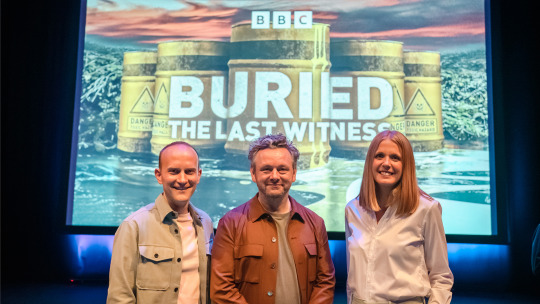
All the episodes (10) here: https://www.bbc.co.uk/sounds/brand/m0020jnd
14 notes
·
View notes
Text
Excerpt from this Chicago Tribune story:
In a letter filed in federal court, the Illinois Environmental Protection Agency said the proposed expansion of a toxic waste dump on the Southeast Side would go against state law. It’s the latest development in a lengthy battle over the future of a 45-acre disposal site on the Lake Michigan shoreline.
“This is a major win for our community, to have both the Illinois attorney general and the Illinois EPA say that the expansion of this toxic landfill will not be (approved),” said Amalia NietoGomez, executive director of social justice nonprofit Alliance of the Southeast.
Since 1984, the U.S. Army Corps of Engineers has been dumping toxic sediment dredged from the Calumet River into the now-full containment site, which contains mercury, arsenic and polychlorinated biphenyls or PCBs. After reaching capacity or after 10 years, whichever came first, the property was to be returned to the Chicago Park District to restore as a park for the largely Black and Latino community.
Four decades later, the property hasn’t been turned over to the community, and the Army Corps wants to raise the dump 25 feet, piling an additional 1 million cubic yards of toxic sediment over another 20 years. In 2023, the Alliance of the Southeast and Friends of the Parks sued the Army Corps to stop the expansion.
So far, the Illinois EPA has denied the federal agency all of the state water quality permits it would need to proceed. The state’s Attorney General Kwame Raoul has also staunchly opposed the proposed project; in 2024 he filed an amicus brief in support of turning the dump into a public park.
More recently on Jan. 16, Raoul filed — alongside a supplemental brief with the U.S. District Court for the Northern District of Illinois — a letter that the state’s environmental agency had sent to the Army Corps the previous day. In that letter, the Illinois EPA said the Army Corps’ proposal is contrary to some environmental regulations, including an Illinois law that prohibits the construction of new landfills or the expansion of existing landfills in Cook County.
3 notes
·
View notes
Text

Look at these tall bootleg cartridges I got!! I thought I owned Pac-Man collection, so Namco Museum for comparison.

Another comparison; just ever-so-slightly taller than the generic GameBoy cart. Robopon: Sun Version also here, just for fun.
The plastic feels pretty much as solid as ordinary GBA carts and the weight is 2x, too, giving these bootlegs a real quality feel. Also, the PCB doesn't rattle around at all in there (and not as a consequence of super glue), they feel pretty great!

They don't look as pretty on the inside as they feel and look on the outside... It's maybe not that bad though, I'd like to believe that this is normal and good, actually 😌. Idk, they function properly and they're probably already kinda old I assume, so so far, so good and a rose by any other name &c.
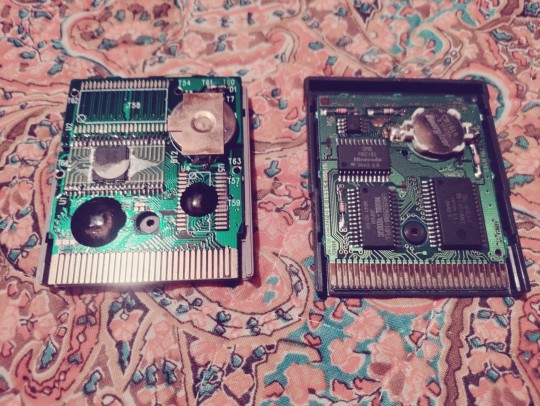
My suspicions were that these cartridges are the size they are because maybe the manufacturers repurposed bootleg Gameboy PCBs, and that I could maybe fit a bootleg board into a Gameboy cart shell and vice versa. Evidently not, so idk why they were this size. just for fun, I guess? Or some other manufacturing reason that I'm just not aware of. It does make them eye-catching!

Here's it alongside some gb bootlegs that I think are maybe from the same timeframe/before. Maybe the boards are still large like that to fit the larger chips and battery? ig it doesn't have to fit the GB cart shape, just reuse some components that wouldn't fit into a gba-sized shell.

They only fit into GBAs, too. Only getting part-way into the DMG or GBC.

So, anyway, this was my first poor financial decision of 2025. 🎉
Getting really into bootlegs and unlicensed games contemporaneous with the systems they were made for. I think these are and the little information I found on them seems to agree, tho I can't be 100% certain.
Bootlegging is naturally an opaque business, so it can be imagined to be dark and mysterious and sexy, lol! It's probably more straightforward than that, but I guess I just think they're neat.
6 notes
·
View notes
Text
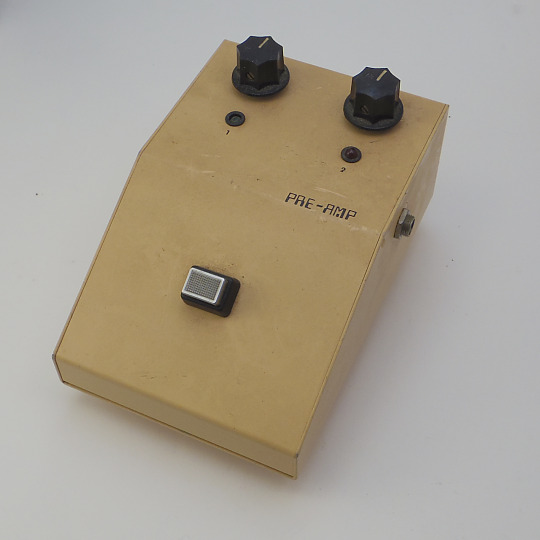

AMZFX - PRE-AMP
"This is a dual op amp booster that was the predecessor to the dual op amp pcb that I sell on my site. I'm not sure how old it is but it pre-dates the internet! I used this pedal sometimes when playing live. A tap of the footswitch toggles between the two channels that can be set for different gains. The enclosure is a folded sheet-metal aluminum box that was widely available. It is a little large compared to modern pedal builds. The power supply jack is a 3.5mm phone jack style socket, such as was used on the original Rat pedals. The bypass is a soft-touch electronic switch circuit using a cmos chip. This was before microprocessors became very small and cheap, but cd4066 cmos switches cost pennies and were available everywhere."
cred: muzique.com/dual-boost, instagram.com/amzfx
17 notes
·
View notes
Text
Updating organization at the Adabench for the New Year This coming year, we wanted to update our storage and organization: with about 700 original designs, a couple dozen in progress, and thousands of items in the shop, it's hard to keep track of all the components and devboards we need to test various combinations. Historically, we've used double-sided totes
, which are good, but the double-sidedness is a bit annoying, or the little divider boxes for small breakouts
, and snap-top boxes for SMT components
But all these cases were sort of swimming around, and it was getting unwieldy. We're going to try to use the large IKEA ALEX drawers
- we like them cause they're wide and thin - and maybe use something like gridfinity
to make a flat storage surface so we can quickly find any PCB or part we need.
#organizationgoals#newyearupdate#storagesolutions#adabench#electronicsworkshop#ikeaalex#gridfinity#pcbdesign#electronicsorganization#diysetup#makerspace#storageideas#workspacegoals#creativesolutions#tidyworkspace#storagehacks#diyorganization#electronicsprojects#smallpartsstorage#modularstorage#ikeahack#makersgonnamake#storagetips#workshopsetup#designworkflow#electronicslab#tidyup#workspaceinspo#makerslife#organizedworkshop
18 notes
·
View notes
Text
Mugshots of women political prisoners from Brazil


Maria Amélia de Almeida Teles, Amelinha Teles. She was arrested in 1964, and then again in 1972 with her husband, César Augusto Teles. The couple's children were also taken by the DOI, and remained there for days, witnessing the condition of their parents. + ( 9/24)

Maria Aparecida dos Santos, Cidinha. She broke with the Brazilian Communist Party – PCB (the Party), to join the ALN, a dissent from Marighella. Her capture occurred when she was preparing to leave on a trip to Cuba to undergo guerrilla training, + (7/24) then 22 years old. Her imprisonment in the Tiradentes Prison Tower lasted more than three years. + (8 /24)

When she was arrested in 1969, she was a member of the VPR (Vanguarda Popular Revolucionária). She suffered the most atrocious abuse, but resisted and managed to leave Brazil and passed through several countries, until she was the first exile to return, in 1979, with the Amnesty Law. + (6/24)

Rose was tortured and imprisoned for 9 months, and was tried and acquitted in 1972. Today she presides over the Tortura Nunca Mais Group in SP. + ( 11/24)
Women participated in the resistance to the dictatorship on the most diverse fronts: in the countryside and in large urban centers, participating in logistical actions, support activities and armed struggle. Even so, they are seen as supporting forces in the resistance to the dictatorship with men considered its protagonists.
#Tortura Nunca Mais#political prisoners#partido comunista brasileiro#brazil#military junta#Vanguarda Popular Revolucionária
18 notes
·
View notes
Text
Israel’s blockade on the Gaza Strip report - June, 2022
Israeli forces have largely restricted access to areas within 300 metres of the Gaza side of the perimeter fence with Israel; preventing, or discouraging, agricultural activities.
Israeli forces restrict access off the Gaza coast, currently only allowing fishermen to access 50% of the fishing waters allocated for this purpose under the Oslo Accords.
Unemployment levels in Gaza are amongst the highest in the world: the Q1 jobless rate in 2022 was 46.6%, compared with an average of 34.8% in 2006. Youth unemployment for the same period (age 15-29) stands at 62.5%. (PCBS)
31% of households in Gaza have difficulties meeting essential education needs such as tuition fees and books, due to lack of financial resources.
1.3 million out of 2.1 million Palestinians in Gaza (62%) require food assistance.
In 2021, rolling power cuts by Israel averaged 11 hours per day.
78% of piped water in Gaza is unfit for human consumption.
Israel treats Palestinians like animals, and expects no resistance. Any form of resistance is met with disproportionate force, often targeting the civilians of Gaza.
Israel is a Nazi state and must be abolished.
https://www.unicef.org/mena/media/18041/file/Factsheet_Gaza_Blockade_2022.pdf.pdf
#free palestine#gaza genocide#palestine genocide#free gaza#palestine#gaza strip#israel#am yisrael chai#gaza
4 notes
·
View notes